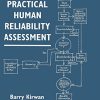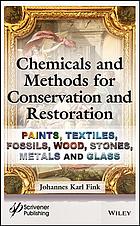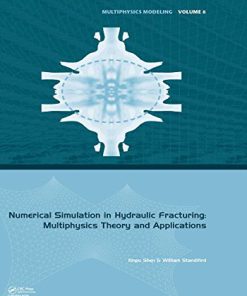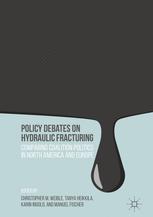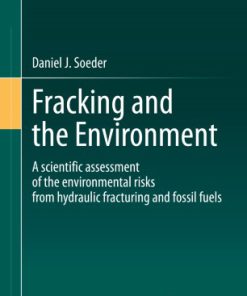Hydraulic Fracturing Chemicals and Fluids Technology 2nd Edition by Johannes Fink ISBN 9780128220740 0128220740
$50.00 Original price was: $50.00.$25.00Current price is: $25.00.
Hydraulic Fracturing Chemicals and Fluids Technology 2nd Edition by Johannes Fink – Ebook PDF Instant Download/Delivery: 9780128220740 ,0128220740
Full download Hydraulic Fracturing Chemicals and Fluids Technology 2nd Edition after payment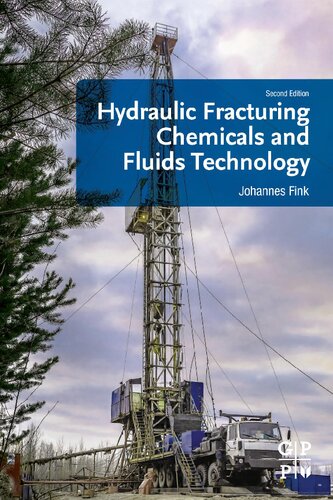
Product details:
ISBN 10: 0128220740
ISBN 13: 9780128220740
Author: Johannes Fink
Petroleum engineers continue to need cost saving and environmentally sustainable products and methods for today’s hydraulic fracturing operations. Hydraulic Fracturing Chemicals and Fluid Technology, Second Edition, continues to deliver an easy-to-use manual of fluid formulations to meet specific job needs. Enhanced with more environmental aspects, this reference helps engineers and fluid specialists select and use the appropriate chemicals for any hydraulic fracturing job. New information concerning nanotechnology applications such as wellbore sealant and proppants are added to enhance operations in a sustainable manner while saving on production costs. Other updates include low recovery of fracturing water in shale, surfactants for waterless hydraulic fracturing, and expanded produced water treatment. Rounding out with updated references and patents for easy reference, Hydraulic Fracturing Chemicals and Fluid Technology, Second Edition, gives engineers a critical guide on selecting better products to boost productions while strengthening environmental enhancement and consideration.
- Gain insight with new information surrounding environmental contamination and produced water treatment methods
- Save on production costs with new nanoparticle-enhanced fluids and applications
- Eliminate guesswork with systematic approach to fluid technology organized by project need
Hydraulic Fracturing Chemicals and Fluids Technology 2nd Edition Table of contents:
Chapter 1: General aspects
Abstract
1.1. Functional categories of hydraulic fracturing chemicals
1.2. Stresses and fractures
1.3. Comparison of stimulation techniques
1.4. Simulation methods
1.5. Testing
1.6. Special applications
1.7. Shale reservoirs
1.8. Hydraulic fracturing with nanoparticles
References
Chapter 2: Fluid types
Abstract
2.1. Comparison of different techniques
2.2. Expert systems for assessment
2.3. Oil-based systems
2.4. Foam-based fracturing fluids
2.5. Utilization of hydraulic fracturing fluids
2.6. Improved thermal stability
2.7. Acid fracturing
2.8. Special problems
2.9. Characterization of fracturing fluids
References
Chapter 3: Thickeners
Abstract
3.1. Nanoparticle-enhanced hydraulic fracturing fluids
3.2. Thickeners for water-based systems
3.3. Concentrates
3.4. Thickeners for oil-based systems
3.5. Viscoelasticity
References
Chapter 4: Friction reducers
Abstract
4.1. Incompatibility
4.2. Polymers
4.3. Environmental aspects
4.4. Carbon dioxide-foamed fluids
4.5. Oil-external copolymer emulsions
4.6. Poly(acrylamide) with weak labile links
References
Chapter 5: Fluid loss additives
Abstract
5.1. Mechanism of action of fluid loss agents
5.2. Additive chemicals
References
Chapter 6: Emulsifiers
Abstract
6.1. Oil-in-water emulsions
6.2. Invert emulsions
6.3. Water-in-water emulsions
6.4. Oil-in-water-in-oil emulsions
6.5. Microemulsions
6.6. Solids-stabilized emulsion
6.7. Biotreated emulsion
References
Chapter 7: Demulsifiers
Abstract
7.1. Basic action of demulsifiers
7.2. Chemicals
7.3. Chelating agents
References
Chapter 8: Clay stabilization
Abstract
8.1. Properties of clays
8.2. Mechanisms causing instability
8.3. Swelling inhibitors
References
Chapter 9: pH control additives
Abstract
9.1. Theory of buffers
9.2. pH control
References
Chapter 10: Surfactants
Abstract
10.1. Performance studies
10.2. Shale colonizing microorganisms
10.3. Surfactants for waterless hydraulic fracturing
References
Chapter 11: Scale inhibitors
Abstract
11.1. Classification and mechanism
11.2. Mathematical models
11.3. Inhibitor chemicals
References
Chapter 12: Foaming agents
Abstract
12.1. Environmentally safe fluids
12.2. Liquid carbon dioxide foams
References
Chapter 13: Defoamers
Abstract
13.1. Theory of defoaming
13.2. Classification of defoamers
References
Chapter 14: Crosslinking agents
Abstract
14.1. Kinetics of crosslinking
14.2. Crosslinking additives
References
Chapter 15: Gel stabilizers
Abstract
15.1. Chemicals
15.2. Special issues
References
Chapter 16: Gel breakers
Abstract
16.1. Gel breaking in water-based systems
16.2. Oxidative breakers
16.3. Delayed release of acids
16.4. Enzyme gel breakers
16.5. Encapsulated gel breakers
16.6. Gel breaking of guar
16.7. Viscoelastic surfactant-gelled fluids
16.8. Granules
References
Chapter 17: Biocides
Abstract
17.1. Mechanisms of growth
17.2. Performance control
17.3. Treatments with biocides
17.4. Special chemicals
References
Chapter 18: Proppants
Abstract
18.1. Fluid loss
18.2. Tracers
18.3. Proppant diagenesis
18.4. Propping agents
References
Chapter 19: Special compositions
Abstract
19.1. Heat generating system
19.2. Crosslinkable synthetic polymers
19.3. Single-phase microemulsion
19.4. Crosslinking composition
References
Chapter 20: Environmental aspects
Abstract
20.1. Risk analysis
20.2. Treatment methods
20.3. Contaminated water reclaim
20.4. Green formulations
20.5. Self-degrading foaming composition
References
Index
People also search for Hydraulic Fracturing Chemicals and Fluids Technology 2nd Edition:
what chemicals are used in hydraulic fracturing
hydraulic fracturing chemicals
hydraulic fracturing fundamentals and advancements
hydraulic fracturing (fracking) quizlet
Tags:
Johannes Fink,Hydraulic Fracturing,Chemicals,Fluids Technology
You may also like…
Engineering
Numerical simulation in hydraulic fracturing : multiphysics theory and applications 1st Edition Shen
Poetry - American Poetry
Engineering
Engineering - Environmental
Engineering
Liquid Silicone Rubber Chemistry Materials and Processing 1st Edition Johannes Karl Fink


